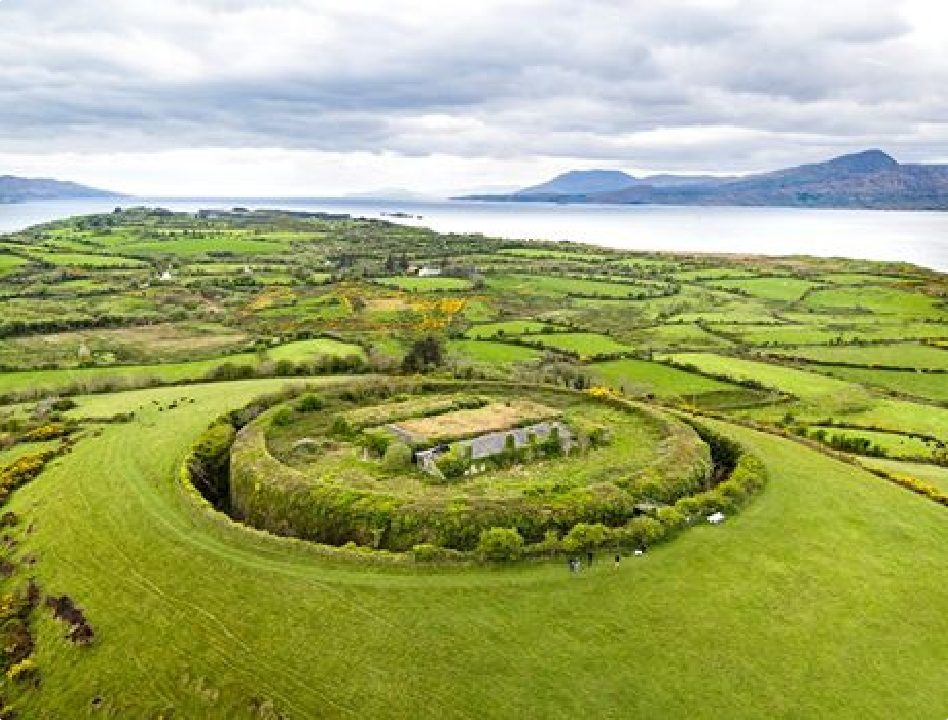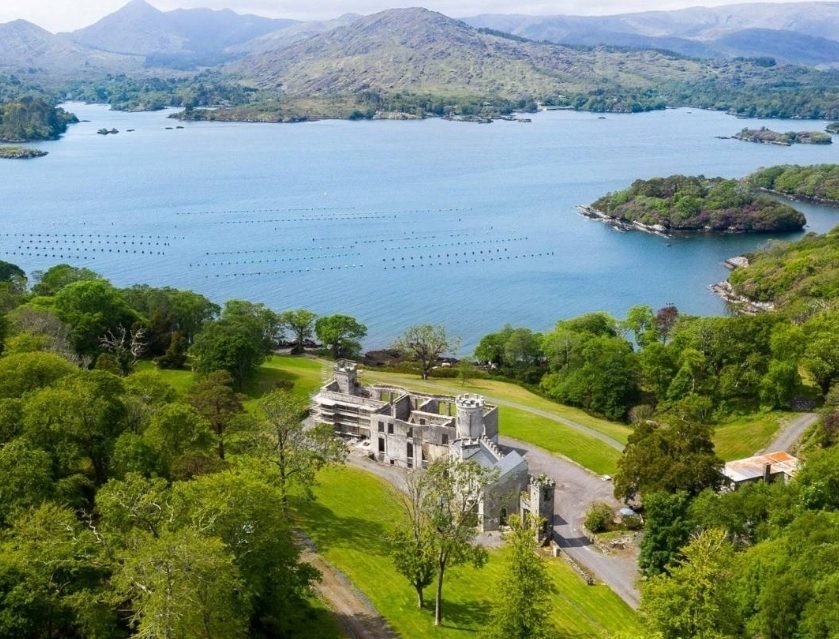About
Whiddy Island
About
Holy Island
Whiddy Island is located around 3km from Bantry, situated at the head of Bantry Bay, and the island is roughly around 5.5km long and 1.6km wide. The earliest history is not very clear and it is not known when the island was first inhabited, However, it is estimated to have been around c.4500BC. The earliest records reveal that there were at least two monasteries and a priory on the island from 500AD, The island is said to have been referred to as ‘Vod Iy’ (meaning Holy Island).
In around 1171, Whiddy Island was resident to the The O’Sullivans, and also monks who were given land on the Island by the High King of Ireland to make amends for the loss of their monastery in Cong after a raid. The O’Sullivans and Monks took control over the bay and the inner harbour while also rebuilding the Castle which you can still see the remains of today.


In the late 1600s Whiddy was bought by Captain Richard White who was an English settler. Captain R White began a production of fishing on the island. In 1701 Captain R White’s son was born on the island. His name was Richard White after his father However was later known as “Counselor White” who went on to purchase what we now know as Bantry house. Whiddy Island went on to be very successful in the pilchard fishing industry in the 1700s. They acquired a fleet of 186 Boats and there were also three ‘Fish Palaces’ (which are places where they would cure the pilchard by fermentation, pickling, smoking or pressing to prepare the fish for eating/selling) at that time the population of the island was 817.
In 1796 the English decided that because of the French invasion forced under Wolfe Tone, that they would build three gun batteries on this island, which stationed 18 large cannons to aid in the protection of the port. These batteries were later abandoned in 1807. During the Great Famine the population of the island dropped to around 250. Because of the available land on the island, Lord Bantry started using the land for deer farming.
About
Whiddy Oil Terminal
In 1918 the East end of the Island was used by U.S. Naval Air Station to build a seaplane base. This was used for patrols and convoys for the Southwest waters of Ireland. This base also had an operational radio station that received messages from countries as far as the United States and Russia. After only one month of operation one of the planes crashed killing one airman, and the base was closed 3 months later in 1919. In 1966, Whiddy Island was identified by the Gulf Oil Corporation as being the most suitable site for a new terminal. The construction of the oil terminal began in 1967 and then completed in 1969. The terminal was in operation for ten years, However, on Monday, 8 January 1979 after the oil tanker of the name ‘Betelgeuse’ exploded causing the ship to be engulfed in flames along with much of the oil cargo that was still onboard. The great extent of this fire caused the island’s Jetty to crumble. This tragedy claimed the lives of 50 men and one women. This incident is known as ‘The Whiddy Island disaster’ or ‘The Betelgeuse Incident’.

This brings us to today, where Whiddy island is home to 20 families and a staple in Bantry and the Beara peninsulas tourism and history. The island has a great fishing industry and the once operational oil terminal has now been repurposed to store the Irish strategic oil reserve. The Island is popular to both tourists and locals for its scenic walks, historical remains and gorgeous views of Bantry Bay.
